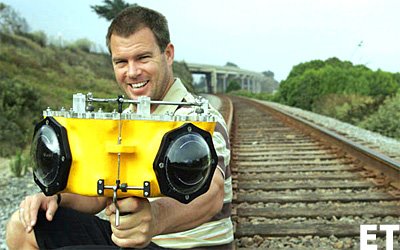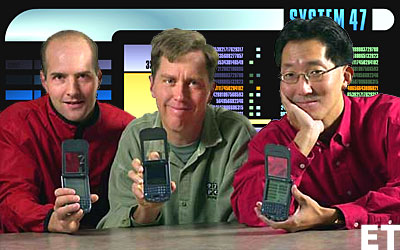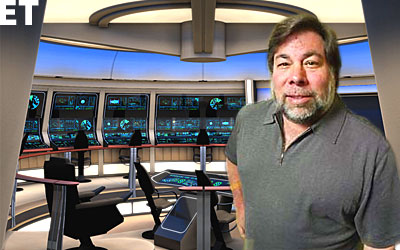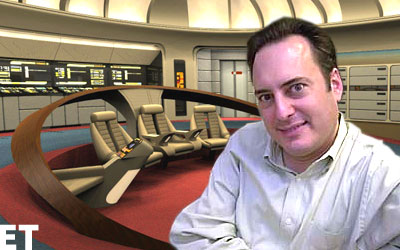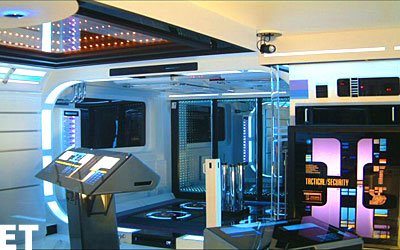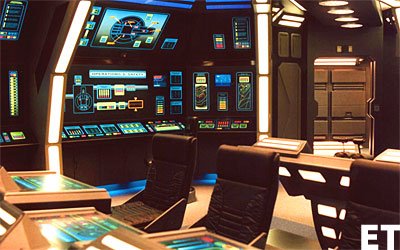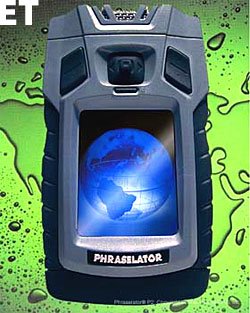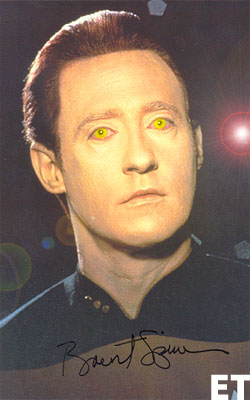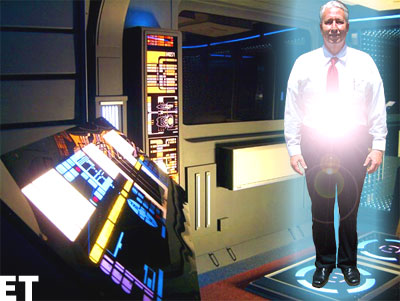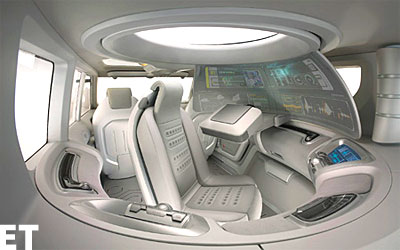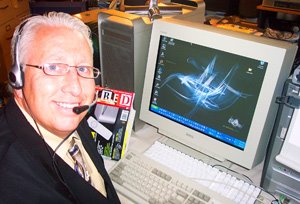:: A leading astronomer at the SETI Institute in California, estimates that advances in technology will enable humankind to discover intelligent life somewhere else in our Galaxy within 20 years!++ Radio Astronomy: California, USA / Scott Hubbard / SETIFor every exceptional person who
believes that intelligent life exists elsewhere in the universe, and believes in the search for ET (Extra Terrestrial) intelligence, you will most likely find another exceptional person who believes that man is alone in the universe (and that searching for ET intelligence is a waste of time and money). However, I believe most people will agree that the following is an enormous (and important) question:
Is life a rare happenstance, or a cosmic commonplace?
 One exceptional person
One exceptional person who
believes in the search for ET intelligence, is Scott Hubbard, an 18 year NASA veteran and Director of the
NASA Ames Research Center from 2002 to 2006. He has been interested in the broad question of life in the universe since he was 12 years old. He has recently assumed the
Carl Sagan Chair for the Study of Life in the Universe at the
SETI Institute.
By 1997, Scott had established a new way of doing business at NASA as manager of the successful
Lunar Prospector mission. He helped spearhead the discipline of
Astrobiology at NASA and was the initiator and first Director of NASA's "virtual institute", the
NASA Astrobiology Institute. He became NASA's “Mars Czar”, taking on the task of successfully restructuring the agency's
Mars Exploration Program in the wake of two major mission failures. Scott was frequently in the papers during the
Shuttle Columbia accident investigation, running the test program that demonstrated the definitive physical cause of the accident. He developed a reputation as a leader in innovative collaboration, establishing the
NASA Research Park at Ames as well as being the driving force behind that Center's supercomputer initiative,
Project Columbia, a 10,240-CPU SGI Altix supercluster, with Intel Itanium 2 processors. Very recently he initiated a high-profile, long-term cooperative agreement with
Google.
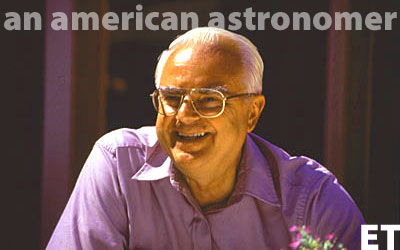 Another exceptional person who believes
Another exceptional person who believes in the search for ET intelligence, is
Frank Drake, the developer of the "
Drake Equation". As Professor Emeritus of Astronomy and Astrophysics (who also just happens to have Engineering and Physics degrees from Cornell University, and a M.A. and Ph.D. from Harvard), and the founder of the scientific search for extraterrestrial civilizations, Frank Drake believes that a minimum of 200 highly developed civilizations exist somewhere in our Galaxy. (His followers estimate the actual number ranges most likely from 10 thousand to 1 million!)
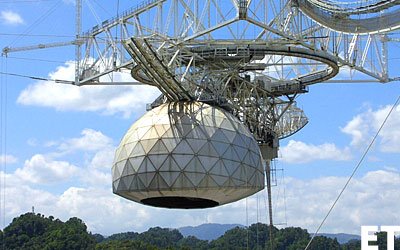 Part of the Extreme Technology
Part of the Extreme Technology involved in the ET intelligence search, is the world's largest computer network. Anyone who downloads a computer program from
SETI@home will be able to process data provided by the world's largest radio telescope located in Arecibo, Puerto Rico. More than 5 million PC's all over the world are taking part in the project!
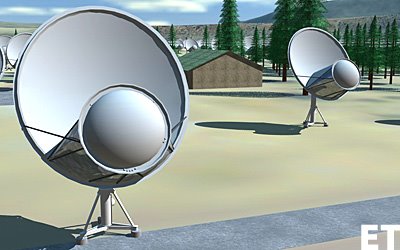 Another part of
Another part of the Extreme Technology involved in the ET intelligence search, is the
Allen Telescope Array (ATA) in Hat Creek, California. The
ATA is the first of a new generation of radio telescopes. It is a radical departure from the traditional radio telescope design and construction.
When completed, the ATA, with 350 six-meter dishes, will be among the largest fully-steerable telescopes in the world. This number of antennas yields approximately one hectare (10,000 square meters) of geometric collecting area, about the same amount as the 100 meter telescope at Greenbank, West Virginia.When the signals from all 350 antennas are combined in one set of processing systems, the array is transformed into sixteen virtual telescopes, each with the sensitivity of a 114-meter diameter antenna and the resolving power of a 900-meter antenna.
 These virtual telescopes
These virtual telescopes (called "beams"), can be pointed anywhere in the field of view seen by the six-meter dishes. Another processing system, called a correlator, acts as a “radio camera” that can image that entire field of view. The ATA will have two correlators. It will also be able to operate over a wider range of frequencies than any other telescope in the world, processing four independent frequency bands simultaneously. This gives the ATA the potential for eighteen different projects to use the telescope at the same time (extreme sharing)!
Note from Technophile: The outputs are sent to either a correlator (which takes all of the signals and makes an image) or one of several phased-array back-ends (PABE's). Some of the planned PABE's are: (1) SETI detectors, (2) pulsar processors, (3) astronomical spectrometers, and (4) RFI monitors. (In other words, "extreme sharing".)
 In the 70's
In the 70's, NASA proposed a new project (at a potential cost of $10 billion), called
Cyclops, with a thousand telescopes installed at 15-kilometer intervals from one another. The telescopes would be tuned to the reception of signals traveling within a range of 1,000 light years (9,500,000,000,000,000 kilometers)! A more advanced version would put
Cyclops on the dark side of the moon, greatly increasing its range (no atmosphere and no light to interfere with sensitive instruments).
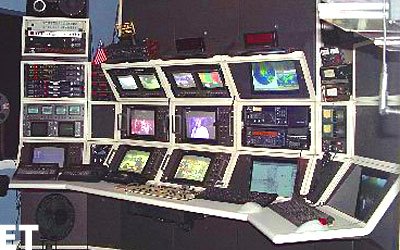 After NASA dropped
After NASA dropped the ball on
Cyclops, the
SETI League picked it up with an even more ambitious project, called
Argus. Composed of about 1,300 enthusiasts, this "league of their own" has worked hard to establish a network of amateur
SETI observers, each operating their own radio dish. Eventually, the
SETI League hopes to have 5,000 SETI observing stations worldwide.
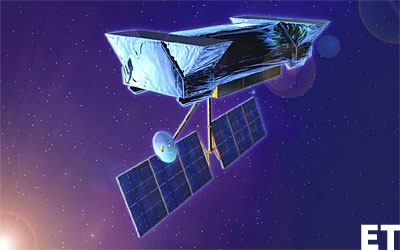 The Space Interferometry
The Space Interferometry Mission (SIM), to be launched early in the next decade, consists of multiple telescopes placed along a 30 foot structure. With an unprecedented resolution approaching the physical limits of optics, the SIM is so sensitive that it almost defies belief: orbiting the earth, it can detect the motion of a lantern being waved by an astronaut on Mars!
 The SIM, in
The SIM, in turn, will pave the way for the
Terrestrial Planet Finder, to be launched late in the next decade, which should identify even more earth-like planets. It will scan the brightest 1,000 stars within 50 light years of the earth and will focus on the 50 to 100 brightest planetary systems.
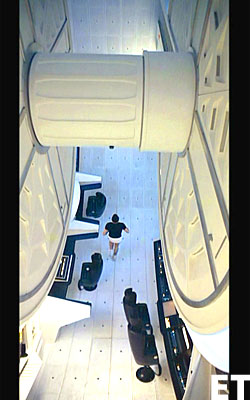 The year 2001
The year 2001 marked the 40th anniversary of humanity's quest to find intelligent life in the universe (what I refer to as the search for ET intelligence).
Humans have repeatedly tried to draw attention to themselves by sending various messages and objects into deep space: Capsules containing the earth's coordinates within the Milky Way; basic physical constants, and the human DNA code; recordings of music by Bach, and pictures of the Egyptian pyramids were all launched into space aboard various spacecraft.
So far, all efforts to find any intelligence in space have ended in failure.
Does this mean that, after 45 years of trying, we should give up? A radio signal can take tens of thousands of years to reach earth from some of the most promising star clusters like "
Tau Whale", "
Eridan's Epsilon", and a spherical mass, "
No. 13", in the constellation of "
Hercules", and therefore it is not logical to be impatient. Besides, there are 200 billion stars that we need to check out in the Milky Way galaxy alone.
The time required for resolving such an enormous global question, as to whether or not ET intelligence exists elsewhere in the universe, will most likely depend on progress made in microelectronics and by the technology of radio telescopes - although we may very well locate ET intelligence by a means other than radio - maybe by using a technology that hasn't been developed yet, or by looking for heat emissions.
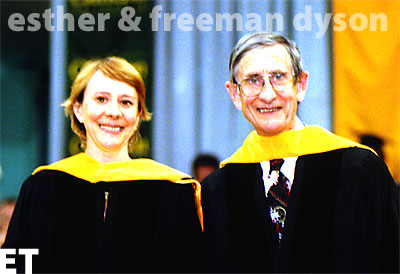 Another exception person
Another exception person who
believes in the search for ET intelligence, is
Freeman Dyson (shown above with his daughter, cyberspace visionary,
Esther Dyson). A physics professor at
Cornell University in the '50s, he later worked on the
Orion Project (which proposed the possibility of space-flight using Nuclear Pulse Propulsion), and has published a number of collections and observations about technology, science, and the future. As of 2003, Dyson is the president of the
Space Studies Institute.
In 1960, Dyson theorized the
Dyson's Sphere, a structure that could be built by a technologically advanced society completely surrounding its native star in order to maximize the capture of available energy. This was illustrated in an episode of
Star Trek: The Next Generation, in which retired engineer Scotty (from the original
Star Trek series) was found to have crash-landed on an abandoned
Dyson Sphere.
Larry Niven's novel Ringworld was also based on Dyson's concept, and was a scientifically detailed attempt to visualize a much simpler structure.
Since advanced civilizations (Type II, or Type III) use a lot of energy, they must, by the
Second Law of Thermodynamics, emit waste heat. Because of this, Dyson
has proposed looking for infrared emissions (rather than radio and/or TV).
Note from Technophile: Should we debate about whether or not ET intelligence exists? Such a debate would be as pointless as arguments were over whether or not the Earth was round, or that the Earth revolved around the Sun, or that our solar system is part of the "Milky Way" galaxy. Countless arguments and debates did not answer any of these complex questions (and these questions pale in comparison to the question about whether or not ET intelligence exists). Scientific investigation did! However, if you wish to read an excellent debate on the subject (between Carl Sagan and Ernst Mayr), just click here.
:: Source: [
SETI]
:: Image Credits: [
SETI]
:: Innovation: The discovery of intelligent life beyond our solar system.
:: Available: Predicted 20 years to first contact.
:: Cost: Millions, if not billions.
"You could be happy here, I could take care of you. I wouldn't let anybody hurt you. We could grow up together, E.T. " ~Elliott
 Note from Dan Lelevier, ET (Extreme Technology) Consumer Product Advisor
Note from Dan Lelevier, ET (Extreme Technology) Consumer Product Advisor:
"Alienware" has rapidly developed into the leading manufacturer of high-performance desktops, notebooks, professional workstations, and media center systems. Consumers requiring the latest innovations, cutting-edge designs, and award-winning customer support turn to
"Alienware" to meet their demands. Already a powerful force in the gaming industry,
"Alienware" has emerged as a strong presence in a diverse set of markets including the home and home office, creative professional, home entertainment, business, and government industries. Stunning, fast, mobile, versatile, cool, impossible, high performance . . . just some of the words that describe
"Alienware" design!

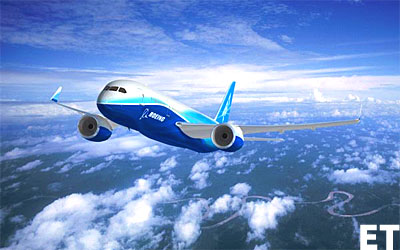 Boeing believes large capacity aircraft flying to big, overcrowded, dispersal “hubs” to be things of the past. Travellers want speed and direct connections. The Boeing 787 Dreamliner is the result of Boeing’s new beliefs. The aircraft is swift and fuel efficient, it is smaller and can access regional airports.
Boeing believes large capacity aircraft flying to big, overcrowded, dispersal “hubs” to be things of the past. Travellers want speed and direct connections. The Boeing 787 Dreamliner is the result of Boeing’s new beliefs. The aircraft is swift and fuel efficient, it is smaller and can access regional airports.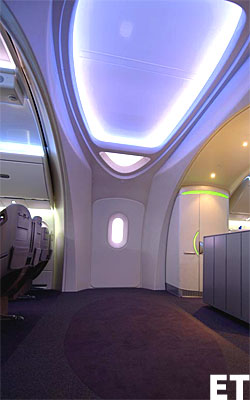 Welcome to the new Boeing 787 Dreamliner! The interior designers understand fully that first impressions can be everlasting. Therefore, they've designed a larger, more open entryway with sweeping arches that immediately direct the eye upward.
Welcome to the new Boeing 787 Dreamliner! The interior designers understand fully that first impressions can be everlasting. Therefore, they've designed a larger, more open entryway with sweeping arches that immediately direct the eye upward. The Boeing 787 Dreamliner's new interior will create a new sensation for passengers inside the cabin. Illuminated by arrays of light emitting diodes, both the brightness and the color of the sky-like cabin ceiling can be controlled in flight by the crew. Flight attendants can give passengers a sense of daylight when desired, and when they want to help passengers rest, simulate a beautiful nighttime sky.
The Boeing 787 Dreamliner's new interior will create a new sensation for passengers inside the cabin. Illuminated by arrays of light emitting diodes, both the brightness and the color of the sky-like cabin ceiling can be controlled in flight by the crew. Flight attendants can give passengers a sense of daylight when desired, and when they want to help passengers rest, simulate a beautiful nighttime sky. Note from Dan Lelevier, ET (Extreme Technology) Consumer Product Advisor: Just as Boeing is an innovative airliner designer and builder, WestJet is and innovative Airline. WestJet is Canada's leading low-fare airline offering scheduled service throughout its 34-city North American network. Named Canada's most respected corporation for customer service in 2005, WestJet pioneered low-cost high-value flying in Canada, and is known and respected for its modern, comfortable jets. To make a reservation, just click on the banner below. Happy and smart flying!
Note from Dan Lelevier, ET (Extreme Technology) Consumer Product Advisor: Just as Boeing is an innovative airliner designer and builder, WestJet is and innovative Airline. WestJet is Canada's leading low-fare airline offering scheduled service throughout its 34-city North American network. Named Canada's most respected corporation for customer service in 2005, WestJet pioneered low-cost high-value flying in Canada, and is known and respected for its modern, comfortable jets. To make a reservation, just click on the banner below. Happy and smart flying!


